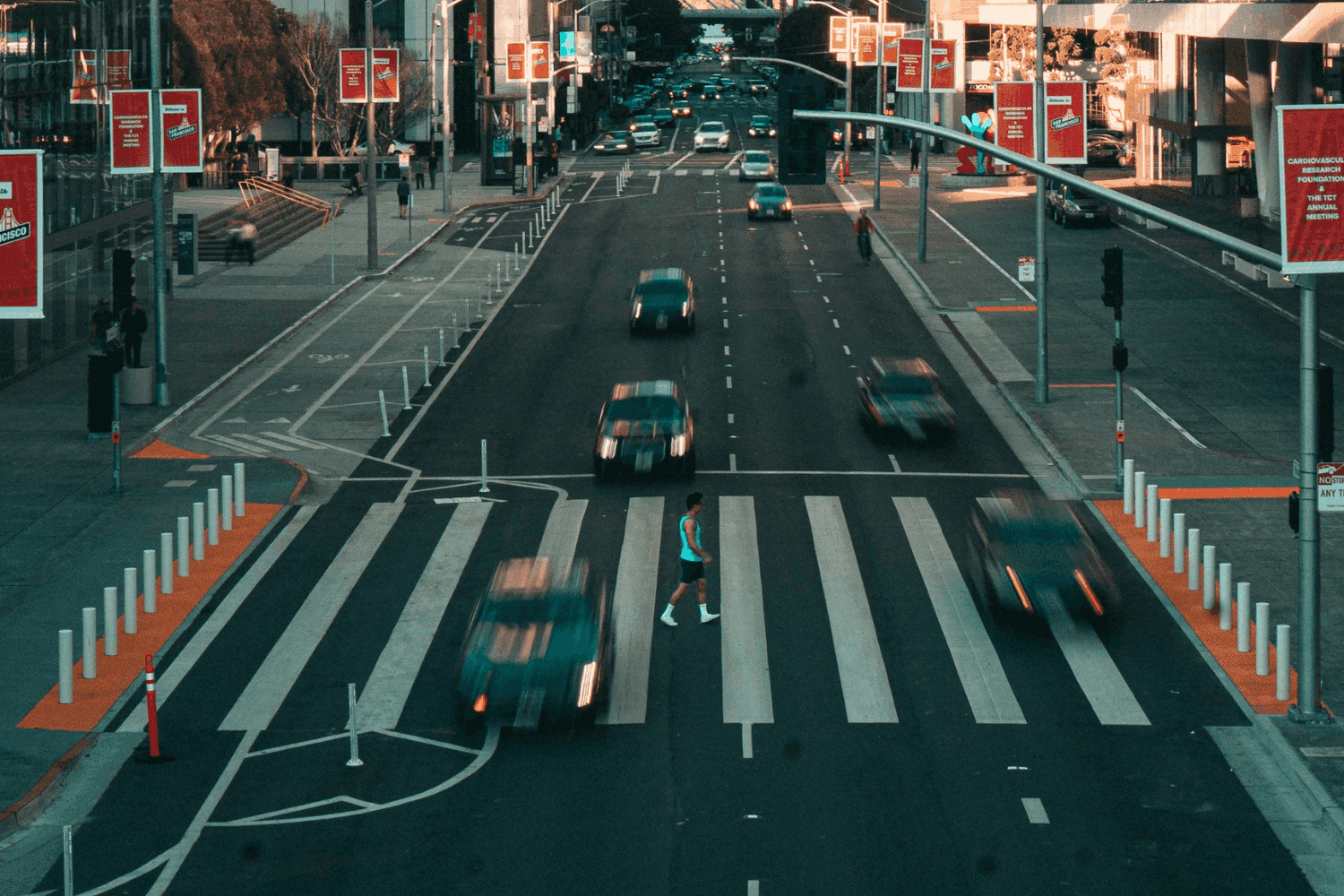
News
By Nora Brown, November 15, 2024
While the number of people hit and killed while walking is declining across the world, the US is the only developed nation with an increasing number of pedestrian deaths year after year. In 2022, 7,522 people were hit and killed while walking. Now, we’re trying to play catch up by adopting a decades-old UN rule that falls short of necessary common-sense pedestrian safety measures.

Amidst the rising number of people hit and killed while walking in the US, the National Highway Traffic Safety Administration (NHTSA) has finally taken action to address vehicle safety standards that could mitigate the risk of death for pedestrians. The proposed new rule would require changes to the hood design of new vehicles, answering years of requests by advocates to bring U.S. vehicle standards closer to the global standards adopted by the United Nations in 2008.
Per the rule, new vehicles would have to be designed so that the likelihood of death from head impact would be lessened (as long as the crash is under 25 miles per hour). While NHTSA says this accounts for around 15% of all pedestrian fatalities, they expect that there may be benefits for other crashes. We’re happy to see the federal government actively considering pedestrians in vehicle design, but this new proposal doesn’t go far enough to protect the thousands of people killed on our roads every year.
So, what's still needed?
According to NHTSA’s own estimate, this rule will save a little more than 67 lives annually. Any step to prevent avoidable deaths on our roadways is absolutely critical—however, given the thousands of people who die walking along our roadways each year, there is far more that needs to be done. Going forward, we need drastic changes in vehicle safety in order to protect our most vulnerable road users.
Since this standard was adopted globally sixteen years ago, vehicles have changed drastically. Popular vehicles have gotten ever-larger, and we know that these SUVs, pickups, and light vans make up an outsized percentage of pedestrian fatalities. Unfortunately, this rule fails to take modern vehicle design into account. NHTSA needs to look beyond just hood design and examine how today’s larger or heavier vehicles pose different threats to people walking.
The proposed rule is also more narrow than the UN regulation. While the UN standard takes a comprehensive approach (assessing how crashes affect the whole body), the proposed rule narrowly focuses on head trauma.
Finally, pedestrian fatalities happen at all speeds. NHTSA’s proposal only tests speeds under 25 mph. At speeds of 40 mph or higher, the fatality rate for pedestrians hit by vehicles is 85%. We urge NHTSA to consider the impact of crashes at all speeds including considering the role that other vehicle factors such as intelligent speed assist might have in reducing the deadliness of potential crashes.
What's next for pedestrian safety
We are hopeful that this new standard will decrease pedestrian fatalities and injuries, but we need more if we hope to move the needle and be on par with our global peers. It’s clear we need to do more than just redesign car hoods. We need to design our streets for the safety of everyone, over the speed of a few. This requires simultaneously fixing our road and car design.
We need continued adoption of safety measures for people walking, biking, and rolling. This proposed rule is a start, but it’s only the beginning of the battle to ensure pedestrians can walk safely on our streets.
Related News

© 2026 Smart Growth America. All rights reserved
Site By3Lane Marketing











